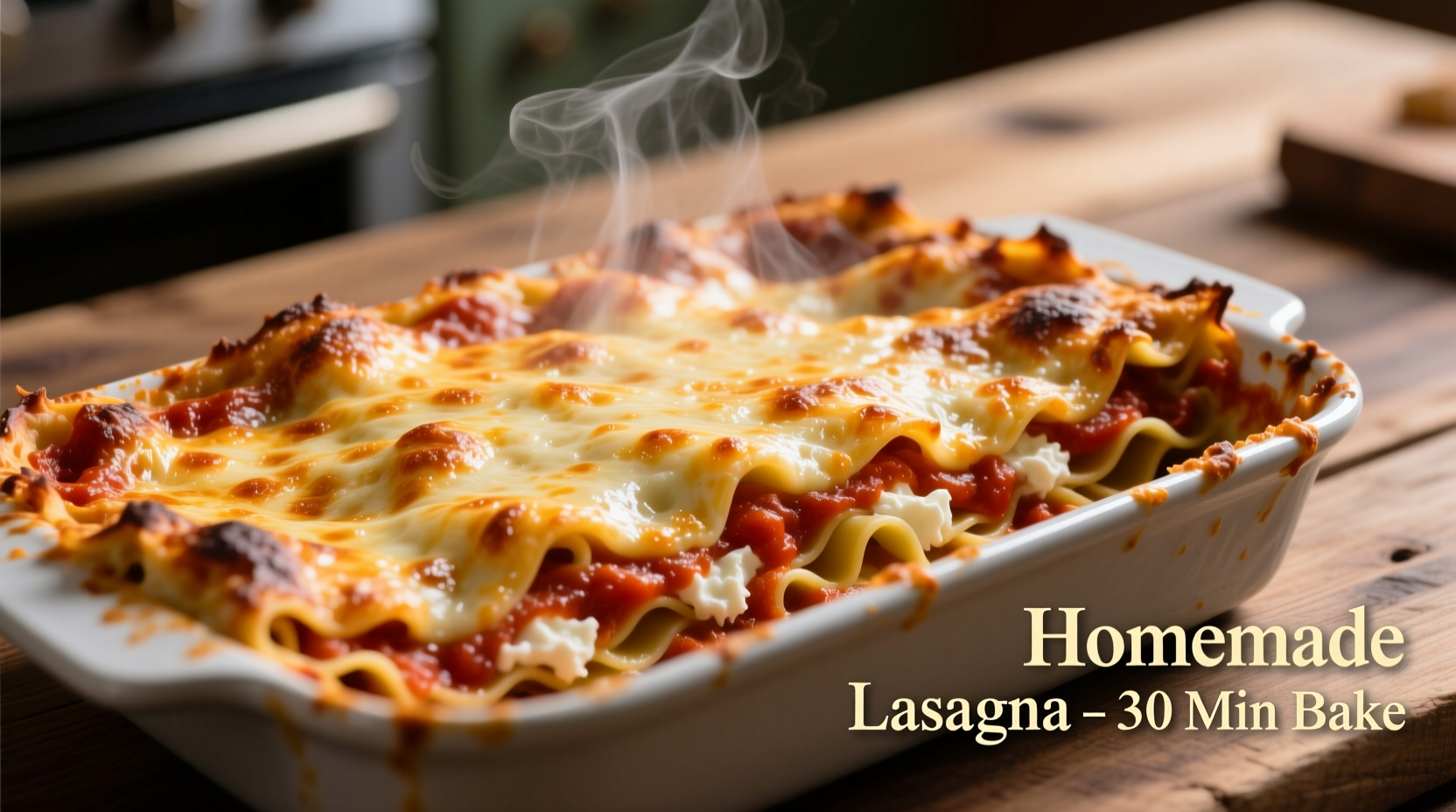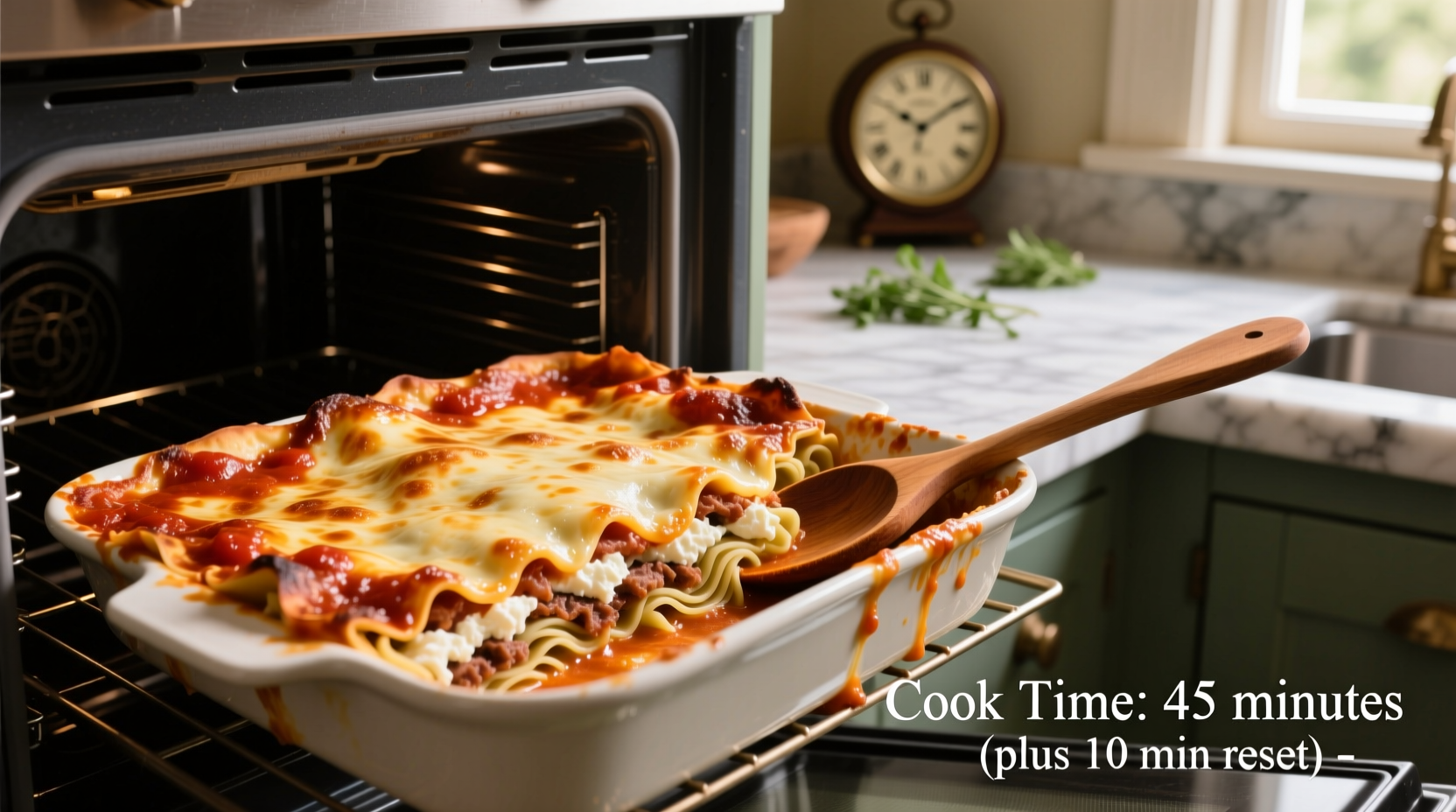The Complete Guide to Perfect Lasagna Timing
Getting the cooking time right makes all the difference between a sloppy, undercooked mess and a beautifully layered masterpiece. While most traditional lasagna recipes need 45-60 minutes in a preheated oven, several factors influence your specific timing needs. Understanding these variables ensures restaurant-quality results every time you make this beloved Italian classic.
Why Lasagna Timing Matters More Than You Think
Lasagna's layered structure creates unique cooking challenges. Unlike single-layer dishes, heat must penetrate through multiple components - sauce, cheese, pasta, and fillings - each with different moisture levels and thermal properties. Undercooking leaves you with crunchy noodles and cold spots, while overcooking turns your carefully constructed layers into a dry, crumbly disaster.
According to food science research from America's Test Kitchen, the critical temperature threshold for properly cooked lasagna is 165°F (74°C) at the center. This ensures food safety while allowing the pasta sheets to fully hydrate and the cheese to melt into that signature gooey texture.
| Factor | Impact on Cooking Time | Recommendation |
|---|---|---|
| Oven temperature accuracy | ±25°F variance can change time by 10-15 minutes | Use an independent oven thermometer |
| Dish material | Glass: +5-10 min | Metal: -5 min | Adjust time based on your baking dish |
| Ingredient moisture | Wet ingredients add 5-10 min | Pre-cook watery vegetables like zucchini |
| Recipe type | Meat lasagna: +5-10 min | Veggie: standard time | Adjust for protein content |
Your Step-by-Step Lasagna Cooking Timeline
Follow this precise timeline for foolproof results:
Preparation Phase (30-45 minutes)
While not part of the actual baking time, proper preparation affects your final cooking duration. Assemble your lasagna with these timing considerations:
- Pasta sheets: Fresh pasta requires less baking time (35-45 minutes) than dried (45-60 minutes)
- Sauce temperature: Cold sauce from the refrigerator adds 5-8 minutes to baking time
- Layering technique: Even distribution prevents cold spots that require extended cooking
Baking Phase (45-60 minutes)
Here's the critical baking sequence that determines your lasagna's success:
- First 25-30 minutes: Cover tightly with foil to trap steam, which hydrates the pasta sheets
- Next 15-25 minutes: Remove foil to allow the top layer to brown and crisp
- Final check: Insert thermometer into center - must read 165°F for food safety
The USDA Food Safety and Inspection Service confirms that 165°F is the minimum safe internal temperature for cooked dishes containing meat and dairy. This isn't just about timing - it's essential food safety.

How to Know When Your Lasagna Is Truly Done
Timing alone isn't enough - use these visual and tactile indicators to confirm doneness:
- Bubbling edges: Sauce should be actively bubbling around the pan's perimeter
- Firm texture: Gently press the center - it should resist slightly but not feel soft
- Golden crust: Top cheese layer should be evenly golden, not pale or burnt
- Steam test: When pierced with a knife, steam should escape consistently
Many home cooks make the critical mistake of skipping the resting period. Food science explains why this matters: during the 10-15 minute rest, residual heat continues cooking the dish while starches set, allowing clean slicing. Cutting too soon releases trapped steam and causes structural collapse.
Troubleshooting Common Timing Problems
Even with perfect timing, issues can arise. Here's how to fix them:
Undercooked Lasagna (Noodles Still Firm)
If your lasagna needs more time after the recommended duration:
- Cover with foil and return to oven for 5-8 minute increments
- Sprinkle 2-3 tablespoons of water or sauce over the top to add moisture
- Check internal temperature every 5 minutes
Overcooked Lasagna (Dry or Crumbly)
Prevent this common issue with these adjustments:
- Reduce initial baking temperature by 25°F for subsequent attempts
- Ensure adequate sauce between layers (at least 1/2 cup per layer)
- Use no-boil noodles which require less moisture absorption
Pro Tips for Consistent Results
Professional chefs rely on these timing techniques that work every time:
- Oven thermometer: 72% of home ovens have temperature variances over 25°F (Consumer Reports)
- Convection adjustment: Reduce time by 25% or temperature by 25°F when using convection setting
- Freezer-to-oven: Add 15-20 minutes for frozen lasagna, covered for first 30 minutes
- Doneness test: Insert a knife into center - it should slide in with slight resistance
Remember that altitude affects cooking times too. At elevations above 3,000 feet, increase baking time by 5-8 minutes as water boils at lower temperatures, slowing the cooking process. The Colorado State University Extension confirms this adjustment is necessary for proper food preparation at higher elevations.
Final Timing Checklist Before Baking
Run through this quick verification before putting your lasagna in the oven:
- Oven fully preheated to correct temperature (verified with thermometer)
- All ingredients at room temperature (except cheese)
- Even layer distribution with adequate sauce between each layer
- Baking dish placed in center of oven for even heat circulation
- Timer set for initial covered baking period
By understanding these timing principles and adjusting for your specific conditions, you'll consistently achieve perfectly cooked lasagna with distinct layers, melted cheese, and tender pasta - never soggy or dry. The key is balancing precise timing with visual doneness indicators for foolproof results every time.











 浙公网安备
33010002000092号
浙公网安备
33010002000092号 浙B2-20120091-4
浙B2-20120091-4